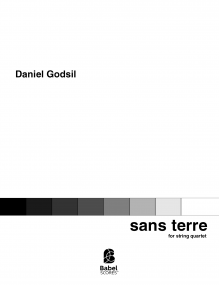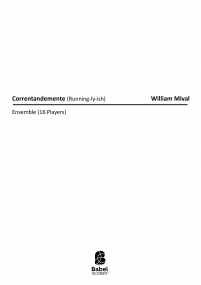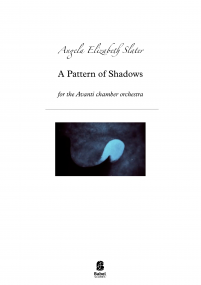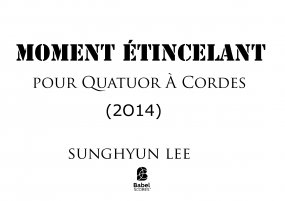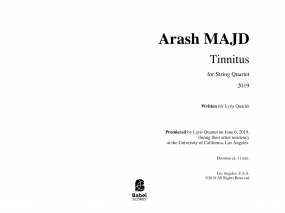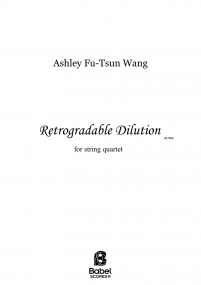Recherche avancée
Tutto chiudi negli occhi
ISMN : 979-0-2325-5219-4
- Identifiez-vous pour créer une liste
Tutto chiudi negli occhi is written for, and with the support of:
New European Ensemble – Den Haag, NL
Quartetto Maurice – Torino, ITA
TW Classic Forst – Brussels, BE
Freon Musica – Roma, ITA
Amarone String Quartet – Brandenburg, GER
Tutto chiudi negli occhi is written with financial support of the Fonds Podiumkunsten NL in the framework of the Werkbijdrage Muziekauteur
Program notes © Jan Nieuwenhuis
In his music the Italian composer Giuliano Bracci works with recollection and the musical past. “I am interested,” he explains, “in the ideas of the French music philosopher Peter Szendy, who regards arrangements as a form of listening. For a composer, the transcribing or arranging of a composition is a way of writing down his own listening.” This idea has occupied Bracci for some time. He wrote Une Petite Fleur Bleue (2005), a short transcription of one of the Fiori Musicali, a collection of organ pieces by Girolamo Frescobaldi. Another example is Hortense (2013), an arrangement of Gesualdo’s madrigal Languisce al fin, which, as Bracci states, “appears in Hortense as a recollection.” In Una notte (2017) Franz Schubert’s song Der Doppelgänger comes over more like a dream. “Every piece is one step further away from a simple transcription,” Bracci recounts. In Tutto chiudi negli occhi he goes yet another step further. This time he dissects the work Nymphes des Bois – La déploration sur la mort de Johan Ockeghem by Josquin Desprez (1450-1521), one of the best known composers of the Franco-Flemish School. Bracci examines the tension between recollection and discovery, and wishes to make both the distance and the proximity of Desprez’ music audible. He not only uses Nymphes des Bois as material, but also sees it in a broader context, as a way of revealing our relationship with the past: “The connection between contemporary artistic practice and our cultural heritage can transform our relationship with history into a creative and relational process. Furthermore, it can contribute to our understanding of the present.” In Tutto chiudi negli occhi Bracci creates a musical dramaturgy based on the text used by Desprez. This yields sections which are totally Bracci’s own. There are also parts containing more direct reference to Desprez’ music, or even a re-writing of it. These two approaches blend together. Nymphes des Bois resonates as a reference and as an apparition. Or, as he himself describes it, “as a palimpsest, i.e. a manuscript from which the original text has been erased but traces of it are still legible. With this piece I want to create a listening experience which is centred around memory’s power to alter, preserve and destroy recollections.” This composition was made possible by a contribution from the Performing Arts Fund NL.
Pages - 28



